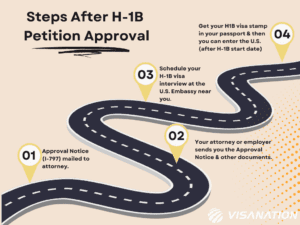Patently Strategic: SCOTUS in Focus
The United States Supreme Court is set to hear opening arguments in Amgen Inc. v. Sanofi on March 27. This is a case that could have profound impacts both on the invention enablement issues that have been plaguing life science patenting, but also more broadly on defining the contemporary role that the patent system will play in our innovation economy going forward. Specifically at issue will be the question of what genus claims require from an enablement perspective. Will the enablement standard be governed by the black and white, codified Section 112 statutory requirement that the specification must only teach those skilled in the art how to “make and use” the claimed invention? Or will the Supreme Court lean on lower court-based additions to the standard that the specification must enable those skilled in the art “to reach the full scope of claimed embodiments” without undue experimentation?
There is little question that the answer will play a significant role in life science – and particularly pharmaceutical – patenting going forward, but the view of the Court has no choice but to help shape the patent system’s delicate balance in fostering innovation through allowing companies to leverage their work and prevent others from copying, while also preventing land grabs that could have innovation-stifling effects.
The Case
Amgen v. Sanofi has a long case history that goes back nearly a decade, with the involved parties trading turns on offense and defense, with two juries coming down on the side of Amgen, but district and Federal Circuit judges ultimately ruling in favor of Sanofi. The battle centers around competing versions of cholesterol-lowering drugs produced by the two companies. Amgen makes Repatha and Sanofi makes Praluent, with U.S. sales handled by Regeneron. The drugs are monoclonal antibodies that lower the levels of LDL (or low-density lipoprotein) cholesterol – aka, the “bad cholesterol.” Amgen initially sued, arguing that patents protecting Repatha were being infringed by Praluent. Regeneron and Sanofi argued that Amgen’s patents weren’t valid in the first place.
- Sanofi is arguing that Amgen is asserting a monopoly over an entire genus of functionally-defined claims that are not enabled since they cover thousands of possible antibodies, while the application only highlights a limited number of examples. Sanofi’s arguments hinge on the Federal Circuit’s full scope enablement standard.
- Amgen is arguing that the Federal Circuit has gone off the rails on enablement laws – that it’s defying more than a century of Supreme Court precedent on the issue, invading the jury’s role, imposing a full scope requirement that’s not contained in the Patent Act, and is frustrating “the purpose of patent law” by invalidating “patents for breakthrough inventions by demanding disclosure about theoretical far corners.” Amgen’s key argument is that their application provides the necessary roadmap for someone skilled in the art to make and use its drug and all covered species without undue experimentation – and that the law as codified does not require the applicant to include examples for every possible permutation.
The Genus Claim: A Historical Path to Drug ROI
Enablement, like its wicked sibling, eligibility, are two grounds for rejection and invalidation that historically haven’t been all that common, but are becoming increasingly prevalent in the less predictable arts like immunology, molecular biology, chemistry, and diagnostics. This is in part due to something called a genus claim, which has been a critical patent feature for the chemical, biotech and pharmaceutical industries. Derived from their traditional biological definitions, a genus is a group defined by common characteristics and a species is a logical division of a genus. In chemical, biotech and pharma patents, a genus claim covers a group of structurally and/or functionally related chemicals, whereas a species claim covers a single compound without coverage of analogs, derivatives, or compounds in the same family.
Why this particularly matters with pharmaceuticals is that one successful drug needs to be able to recoup the massive R&D costs from the countless failures that preceded it – and that requires adequate coverage and exclusivity over a period of time. A lot of drugs would be pretty easy to design around if a patent only narrowly claims a specific chemical species. A competitor would simply have to use a different functional group or additive with the same properties and bam, they have a new, non-infringing therapeutic based on an R&D investment they didn’t make. It would also be impractical, if not impossible, to reduce to practice every possible applicable species, so broader genus claims have historically been the umbrella tool of choice for many innovators in this space.
Death of the Genus Claim?
Where genus claims have run into trouble is with the interpretation and court-based expansion of one of the core statutes that governs patentability. This fundamental tenet of patent law is the concept of enablement. When a patent publishes, the information contained in the patent becomes part of the public record, so enablement requirements aim to ensure that society receives something useful in exchange for the exclusive rights granted to the inventor. This is the grand bargain of the patent system. Codified in Section 112 of U.S. Code, Title 35 are the minimum requirements for the quality and quantity of information that must be contained in a patent application to justify the grant of a patent. Section 112 basically says that the patent application must describe the invention in full, clear, concise, and exact enough terms to demonstrate that the inventor had possession of the invention at the time of filing (this is called the written description requirement) and to enable those skilled in the art to make and use the invention (the enablement requirement). A 1916 Supreme Court decision further defined the standard for determining whether the description meets the enablement requirement by raising the question of whether or not the experimentation needed to practice the invention is undue or unreasonable. To this day, even though the statute does not use the term “undue experimentation,” it has been interpreted to require that the claimed invention be enabled so that any person skilled in the art can make and use the invention without undue experimentation.
If the Supreme Court leans on the Federal Circuit’s application of the evolving enablement standards, then genus level coverage will require reaching the full scope of claimed embodiments without undue experimentation, which in practice, translates to impractically requiring the inventor to actually reduce to practice every single possible species, or at least most species, they intend the genus claim to cover.
Episode Overview
With only slight bias, we can’t think of a better person to help break this all down – a host who’s spent her academic and professional career at the intersection of life science and patent law. This month’s host, Dr. Ashley Sloat, has an academic background in microbiology and immunology and is now the President and Director of Patent Strategy at Aurora. She leads the discussion today, along with our all-star patent panel, exploring:
- The scientific background around antibodies necessary to understand the claims.
- A brief case history of Amgen v. Sanofi.
- An overview of the enablement factors and tests that have been historically applied in courts and how they might apply to this case.
- A discussion around open questions and the potential unintended consequences of the Supreme Court only taking up enablement and ignoring written description.
- A deep look at the impact of physiology being highly unpredictable – what is a reasonable standard for teaching one of skill in the art to make and use an invention involving a process that is inherently long, laborious, and complex?
This ends up being a really great, spirited conversation with panel members coming down strongly on both sides of the case with very compelling arguments – really highlighting the complexities and fundamental issues the court will have to face.
High Stakes for the High Court
Regardless of how this plays out, it’s hard to imagine the High Court’s ruling not having significant consequences for the industry. The Justices’ willingness to hear the case alone signals that big changes could be on the horizon. With district and Federal Circuit courts ruling one way in lock step, and the Solicitor General recommending the Supreme Court not take the case, combined with the fact that the Court takes up few cases on petition – and fewer yet for patent law – there’s little reason to believe the Supreme Court would take the case simply to rubber stamp prior rulings.
In any case, the stakes are incredibly high and there truly is a very important balance to strike in all of this. While broader protection is necessary for life changing pharmaceutical patents to have any real value, enablement requirements are the check in the system that prevents massive land grabs and exclusive rights for things that applicants didn’t actually invent.
Discussion Panel
Ashley is joined today by our always exceptional group of IP experts including:
- David Cohen, Principal at Cohen Sciences
- Kristen Hansen, Patent Strategist at Aurora
- David Jackrel, President of Jackrel Consulting
- Ty Davis, Patent Strategy Associate at Aurora
Going Deeper on Enablement
Enablement is a topic we’ve covered extensively on this podcast. It’s a huge matter with many corners and complexities. Check out the following for an even deeper dive into the other half of the grand bargain:
Ashley Sloat
Ashley is Director of Patent Strategy at Aurora Consulting and a USPTO-registered patent practitioner who specializes in the development and management of patent portfolios for startup ventures and emerging growth […see more]
Josh Sloat
Josh Sloat serves as an Executive Technology Advisor with Aurora Consulting and provides consultation for patents in the software, information technology and telecommunications spaces. With over 15 years of engineering […see more]






